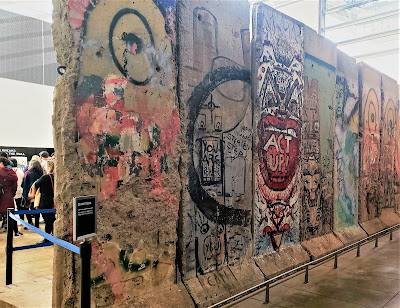Capitalist Ducks.
by Rick Marschall.
The first time I visited Carl Barks it was at his
California home; Temecula I think.
He and his wife Garé lived in a modest home and were
gracious hosts. Retired, he was, technically, but he had been painting his Duck
scenes, or cover re-creations, and a bit in the center of a maelstrom. Fan
passions led to price rises – Carl painted one a month, I think – and “what the
traffic would bear” increased the fees, and resulted a waiting list years long.
To him it was rather bewildering.
Dedicated (or even casual) fans know that Carl Barks,
invariably anonymous, was the “good duck artist.” It was his stories from our
childhoods that were better than any other; his characters (including those he
invented for Disney) had more life; his drawing was special.
When sharks got involved as Carl’s “protectors,” managing
sales, or pirating prints on Masonite of his canvases, Disney’s corporate folks
interceded. They had to, one thinks. Carl appeared to take it all – the ups and
downs – in stride, but I could never tell. That first afternoon I didn’t talk
much about those things, but about similar matters – we talked politics, and
specifically I had always wanted to ask him about Uncle Scrooge’s
identification with riches. Homage or criticism?
I thought of those conversations this week, seeing a
socialist and a billionaire side-by-side on a debate stage. My vivid opinion is
that carl would not have been for… either, frankly. Then his heart was with the
other party; California’s governor was beginning a quiet revolution.
Confirmation, or not, Carl drew this sketch of his Uncle
Scrooge for me that day. (Later, when I met Mickey Mouse’s master, Floyd
Gottfredson, for a sketch, arthritis prevented more than a signature. On the
same page, though: a nice pairing).
On that same day we stood together for a photo. Carl’s
leisure suit is dated, but of a time and place. There is no defense of my
outfit or hair or shades, but history is history.
That is Carl’s wonderful wife Garé with us. She had one
arm, but that did not prevent her from painting – a passion she pursued with
attractive landscapes to local success. I reproduce one here.
Also: since this is History, I reproduce here a note from
Carl, 1975, about old Western Publishing art that occasionally turned up. $215
in 1944 for full art and story, sigh. Well, Carl was phlegmatic. “Go slowly,
sands of time”…
… which was the title of a story laid out by Carl. After I
met him, and after I was editor at Marvel, I wrote scripts of Disney characters
for European comic-book publishers, chiefly Gutenberghus in Denmark. My
instructions were to “write like Carl!” Full circle. (It eventually was
published in the US.) This story outline was almost viewed as average fare for
the Danes… but its existence created a sensation among American fans.
While I was at Marvel, Ed Summer of Supersnipe Gallery was
involved in producing a giant volume of Carl’s stories, to be colored anew. I
cannot remember what strings I was able to pull, or with whom, or whether a mere
recommendation of a colorist did the trick, but I nominated Peter Ledger, the
Australian artist then camped in our offices and working on John Buscema’s
WEIRDWORLD trilogy. I ultimately regretted my largess, though, because the
stories’ panels were garish, I thought, and maddeningly airbrushed.
At the end of the day – Carl’s days – it was a blessing
that he was able to get recognition, and some remuneration, and the adulation
of thousands of fans. He was not only a good duck artist, but a good man and a
good friend.
– 30 –
69


























